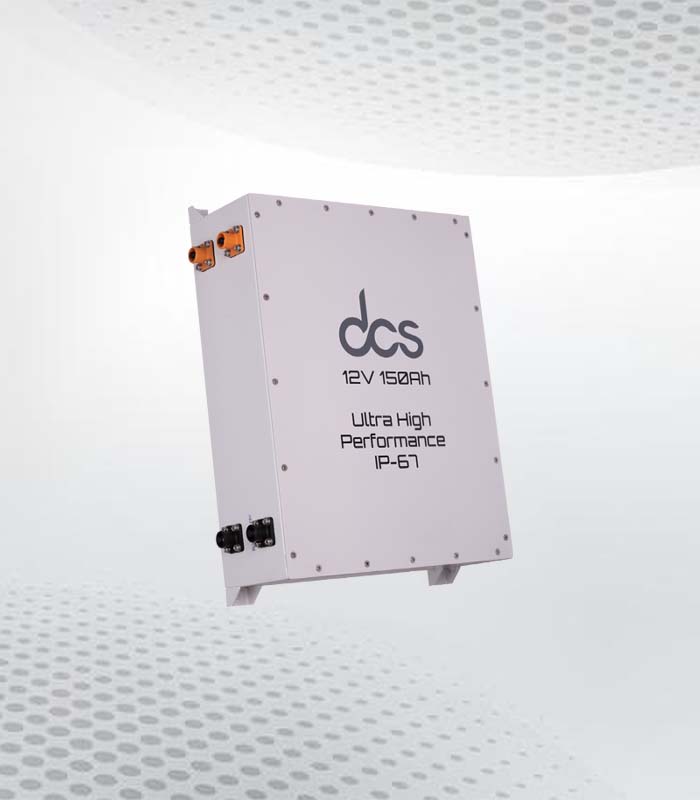Are you ready to take your adventures to a new level? If you’re looking for reliable power that lasts, a lithium leisure battery is a game changer. Lithium options offer longer lifespans, quicker charging times, and higher capacity than traditional lead-acid batteries. Whether camping in the wild or taking an extended road trip, understanding how to set up your Leisure Battery can make all the difference. In this guide, we’ll walk you through everything from choosing the correct battery type to maximizing its performance with solar power integration.
Understanding Leisure Batteries: What You Need to Know
Leisure batteries are designed to provide power for non-starting applications, such as camping, caravanning, and boating. Unlike regular car batteries that deliver a quick burst of energy to start an engine, leisure batteries supply a steady flow over extended periods. This makes them ideal for running appliances like lights, refrigerators, and chargers.
You’ll encounter various types when selecting a leisure battery—mainly lead-acid and lithium options. Lithium leisure batteries stand out due to their lightweight design and superior performance characteristics. They can be discharged deeper than lead-acid counterparts without damaging the cells, allowing greater usage flexibility.
Understanding your energy needs before choosing a battery is essential. Assess how much power you’ll require based on the devices you’ll use during your trips. This knowledge will help ensure you’re equipped with the right battery setup for optimum enjoyment away from home.
Choosing the Right Battery: Types and Specifications
Understanding the available types is crucial when selecting a Leisure Battery. Lithium Iron Phosphate (LiFePO4) batteries are popular for their safety and longevity. They offer high discharge rates, making them ideal for devices that require significant power.
Specifications matter as much as the type you choose. Pay attention to capacity measured in amp-hours (Ah), which indicates how much energy the battery can store. A higher Ah rating means longer use time between charges, which is perfect for extended trips or off-grid living.
Battery size and weight should also fit your vehicle’s layout and carrying capacity. Compact batteries are easier to install but may have lower storage capacities. Ensure that whatever option you select meets your needs without compromising space or performance during your adventures on the road.
Battery Location: Finding the Best Spot in Your Vehicle
Choosing the right location for your Leisure Battery is crucial for optimal performance. Ideally, it should be placed in a dry, ventilated area away from direct sunlight. This helps maintain stable temperatures and prevents overheating, which can compromise battery life.
Consider accessibility when selecting a spot. You’ll want to reach the battery for maintenance checks or replacements easily. A convenient location can save you time and effort, making regular upkeep hassle-free.
Avoid locations near flammable materials or sensitive electronics. Safety should always be your top priority when installing any electrical component in your vehicle. Finding that perfect balance between accessibility and safety will help ensure your Leisure Battery operates efficiently for many future adventures.
Wiring Basics: How to Connect Your Lithium Ion Leisure Battery Safely
Safety is paramount when connecting your Lithium Ion Leisure Battery. Start by ensuring you have the right tools and materials at hand. You’ll need quality cables with appropriate gauge sizes to handle the current safely. A well-insulated terminal connection helps prevent short circuits.
Next, always connect the positive terminal first, followed by the negative. This method reduces the risk of sparking while you’re working on your setup. If possible, use a dedicated fuse for added protection; it safeguards against any electrical faults that could damage your system.
Double-check all connections before powering up anything in your vehicle. Loose or corroded terminals can lead to inefficient performance or even dangerous situations. Keeping everything tight and clean will ensure optimal functionality for your Leisure Battery system over time.
Using Battery Isolators: Protecting Your Vehicle’s Electrical System
Battery isolators play a crucial role in safeguarding your vehicle’s electrical system. By preventing current backflow, they ensure your Leisure Battery operates independently of the vehicle’s starting battery. This separation is vital for maintaining the health and longevity of both batteries.
When you’re parked or using appliances powered by your leisure battery, an isolator allows you to draw power without risking a dead starter battery. It seamlessly manages charging duties between batteries while protecting them from draining each other when you’re not in use.
Installing a quality battery isolator can also enhance safety during usage. Many modern isolators come with built-in fuses and automatic disconnect features, giving you peace of mind that your electrical components remain protected against overloads and shorts.
Proper Charging Techniques: Maximizing Battery Lifespan
Proper charging techniques are essential for maximizing the lifespan of your Leisure Battery. Always use a charger specifically designed for lithium batteries. These chargers regulate voltage and current, preventing overcharging, which can lead to reduced performance and longevity.
It’s crucial to monitor the state of charge (SOC) while maintaining it between 20% and 80%. Charging your battery too frequently or allowing it to discharge completely can diminish its capacity over time. Aim for frequent, shallow discharges rather than deep ones; this approach preserves the health of your battery more effectively.
Temperature also plays a significant role in charging efficiency. Charge your battery at ambient temperatures between 0°C and 45°C (32°F to 113°F). Extreme temperatures can negatively affect charging rates and overall performance, so make adjustments if needed during seasonal changes or when parked in direct sunlight.
Integrating Solar Power: Charging Your 12v Deep Cycle Leisure Battery with Renewable Energy
Integrating solar power into your setup can significantly enhance the utility of your Leisure Battery. A well-placed solar panel harnesses sunlight, converting it into energy to keep your 12v Deep Cycle Leisure Battery charged while you’re on the go. This renewable source ensures a continuous supply without relying solely on traditional charging methods.
Selecting the right solar panel size and type is crucial for optimal performance. Consider factors like available roof space and average sunlight hours in your area. A quality charge controller will also help manage the flow of electricity, preventing overcharging and extending battery life.
Setting up this system may require some initial investment, but the long-term benefits are substantial. You’ll enjoy greater independence from grid power and lower operating costs during adventures or camping trips, all while being environmentally friendly with renewable energy sources.
Battery Management Systems: Enhancing Performance and Safety
A Battery Management System (BMS) is essential for optimizing the performance of your Leisure Battery. It monitors various parameters such as voltage, current, and temperature to ensure that the battery operates within safe limits. This prevents overcharging and deep discharging, which can significantly shorten a battery’s lifespan.
Moreover, a BMS enhances safety by protecting against short circuits or overheating hazards. These systems often include cell balancing to maintain uniform charge levels across all cells in the battery pack. This ensures efficient energy use and maximizes capacity.
In addition to safety features, many modern BMS units offer connectivity options. Users can monitor their battery status through smartphone apps or on-screen displays. This real-time data keeps you informed and allows for timely interventions when necessary.
Understanding Depth of Discharge: What It Means for Your Battery
Depth of discharge (DoD) refers to the percentage of a battery’s capacity used. Understanding DoD is crucial for maintaining optimal performance and longevity for lithium leisure batteries. Lithium options can handle deeper discharges without suffering damage unlike traditional lead-acid batteries.
A lower DoD means a longer lifespan for your battery. However, frequently discharging it too deeply may reduce its overall efficiency. Most manufacturers recommend keeping the DoD below 80% to balance usable power and lifespan.
Monitoring and managing your depth of discharge will help ensure you get the most out of your Leisure Battery.
Ventilation Considerations: Keeping Your Battery Cool
Proper ventilation is crucial for your Leisure Battery. When batteries operate, they generate heat. Excessive heat can lead to reduced performance and shorter lifespan. Hence, ensuring a well-ventilated space is essential.
Look for areas in your vehicle that allow air circulation around the battery. Avoid tight compartments where hot air can become trapped. Installing vents or using fans can enhance airflow, helping maintain optimal temperatures during use.
External factors like direct sunlight and high ambient temperatures should also be considered. Parking in shaded areas or using reflective covers will minimize overheating risks. Keeping your battery cool boosts efficiency and promotes safety throughout its operation.
Regular Maintenance Checks: Ensuring Long-Term Performance
Regular maintenance checks are crucial for keeping your Leisure Battery in top condition. By routinely inspecting connections and terminals, you can prevent issues like corrosion or loose wiring that could impact battery performance. A quick visual inspection every month goes a long way.
Monitoring the state of charge is equally important. Keeping an eye on voltage levels helps ensure your battery isn’t over-discharged or under-charged, which can significantly shorten its lifespan. Consider using a voltmeter to track these readings easily.
Don’t forget about environmental factors, either. Ensure proper ventilation around the battery compartment to avoid overheating issues during hot weather, as excessive heat can lead to reduced efficiency and potential damage. Simple checks help maintain optimal performance for years to come.
Tools and Techniques for 12v Lithium Ion Leisure Battery
The right tools are essential when setting up a 12v lithium ion leisure battery. A multimeter can help you monitor voltage levels and ensure everything functions correctly. Wire strippers and crimpers will make connecting cables to terminals much more accessible, ensuring secure connections that reduce the risk of power loss.
In addition to these tools, consider investing in high-quality connectors and fuses. These components are crucial for safety and reliability. They protect your system from overloads or short circuits while maintaining optimal performance.
Techniques also play a pivotal role in installation and maintenance. Regularly check connections for corrosion or wear, which can impact efficiency. Following proper charging practices will significantly extend your battery’s lifespan—always refer to manufacturer guidelines when choosing charge cycles or methods.
Conclusion
Setting up your Lithium Leisure Battery can significantly enhance your outdoor experiences. Maximizing its performance ensures you get the most out of every adventure. Prioritize proper installation and maintenance for longevity. A well-cared-for battery will serve you efficiently, whether camping in the woods or parked at a festival. Embrace innovation by integrating solar power solutions as part of your energy strategy.
FAQs
What is a lithium leisure battery?
A lithium leisure battery is designed specifically for recreational vehicles and off-grid systems. It offers higher energy density, longer lifespan, and faster charging capabilities than traditional lead-acid batteries.
How long does a lithium battery last?
With proper care, the lifespan of a Leisure Battery often exceeds 10 years. Regular maintenance and optimal charging techniques greatly enhance longevity.
Can I charge my lithium battery with solar power?
Yes, you can effectively charge your Leisure Battery using solar panels. This renewable energy source provides an eco-friendly way to keep your system running smoothly while reducing reliance on conventional electricity sources.








